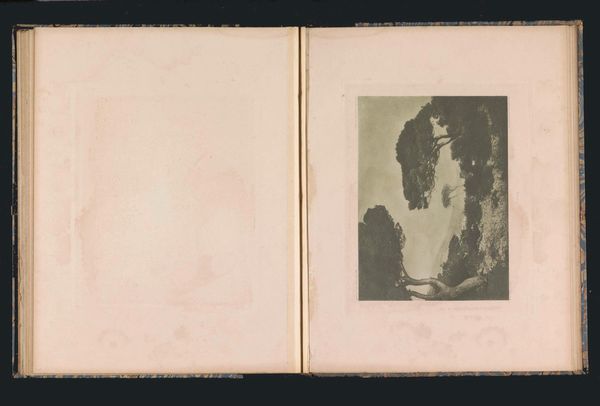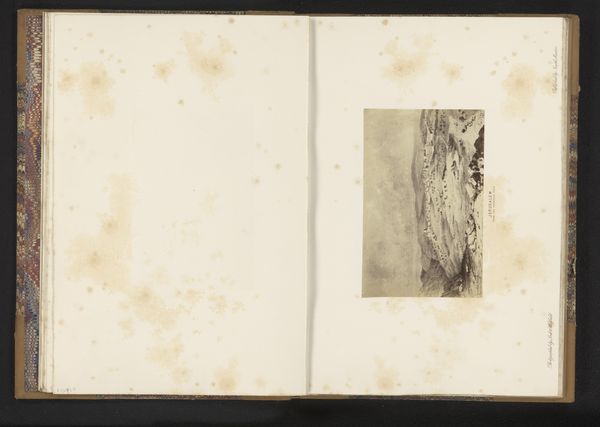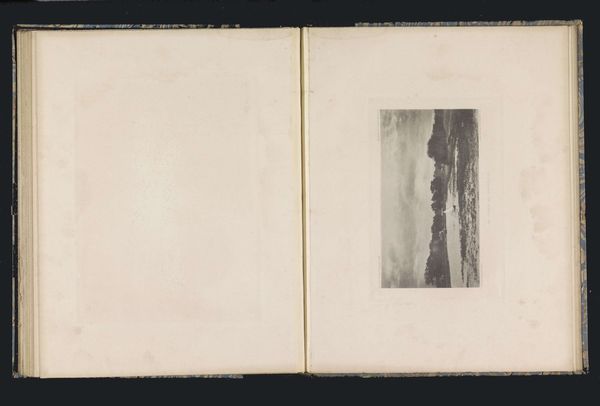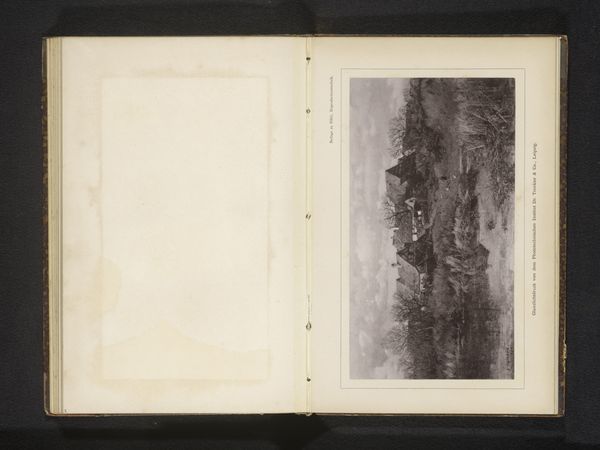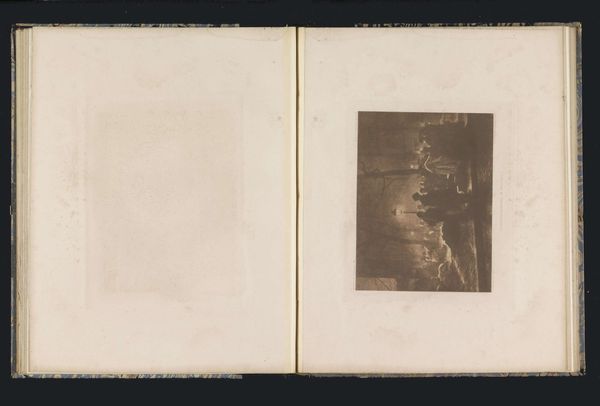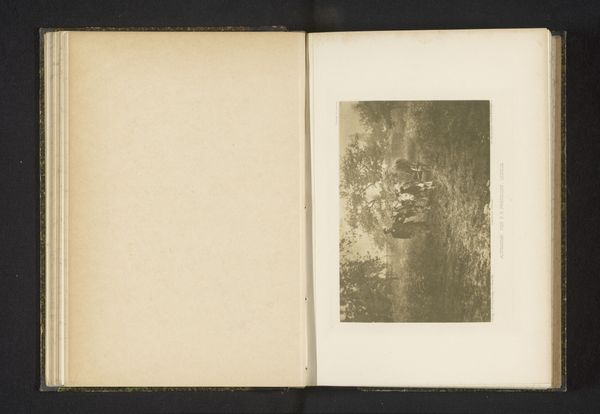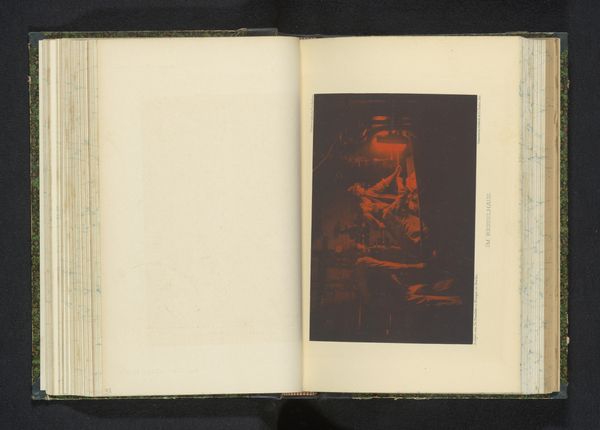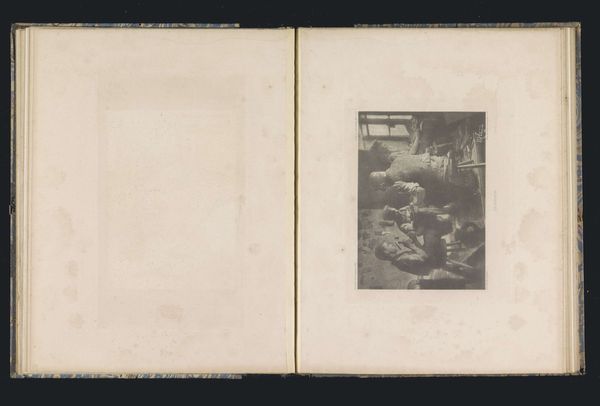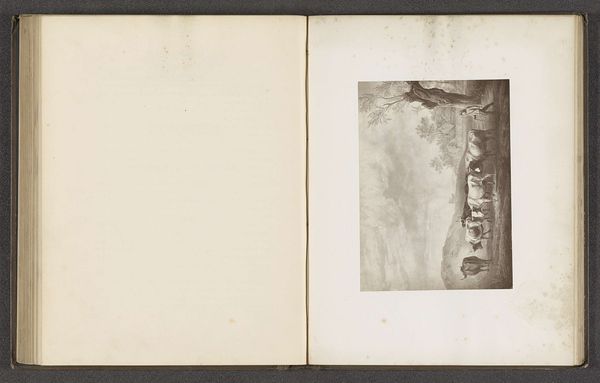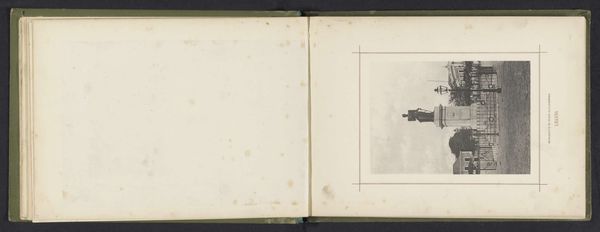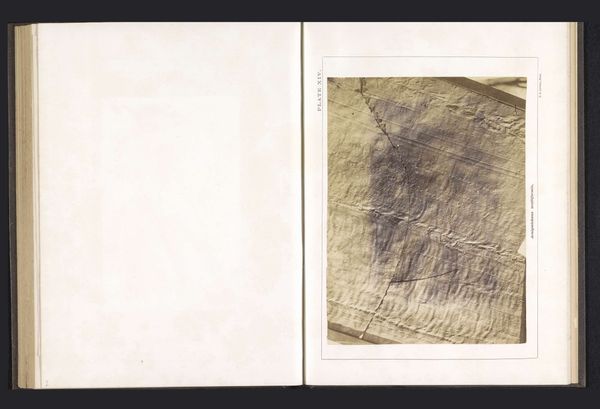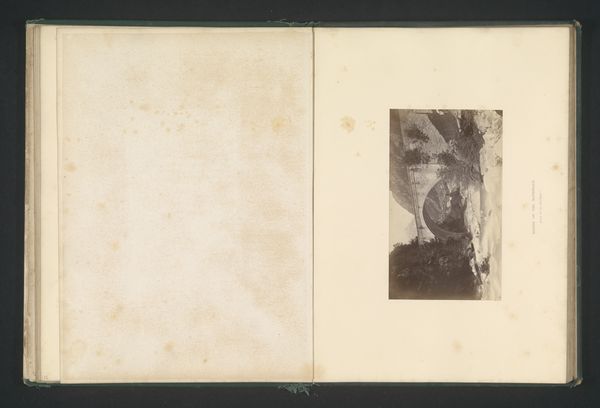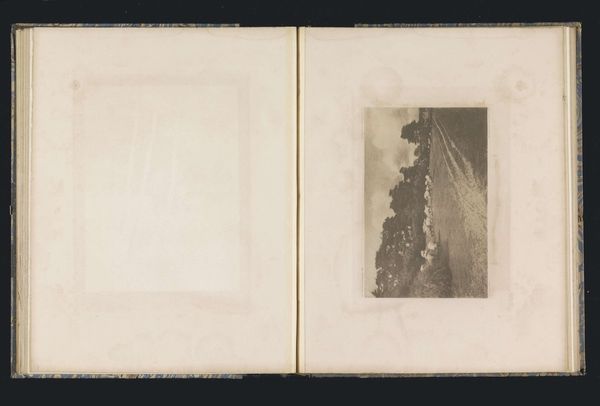
print, etching, photography
#
still-life-photography
# print
#
etching
#
book
#
photography
#
genre-painting
Dimensions: height 122 mm, width 171 mm
Copyright: Rijks Museum: Open Domain
Curator: Here we have a rather compelling image: a photograph of an etching titled "Drie smeden aan het werk in een smederij" or "Three blacksmiths working in a smithy" by Konrad Biesalski. It predates 1899 and is bound within a book. Editor: Immediately striking is the darkness. A predominantly black image pierced by intense red light suggesting the blacksmiths are actively working with very hot metal. The human figures almost appear silhouetted, adding a feeling of drama, but also alienation due to lack of details. Curator: Absolutely. We have a genre painting rendered as a print. It is intriguing how photography is capturing other processes of visual rendering, almost a documentary reproduction. Editor: Considering the timeframe, there's a tension between embracing technological advances in photography while valorizing the older tradition of etching and bookmaking. Was it to memorialize this image that has themes around labour? Was photography the only medium able to capture that moment realistically and safely in an etching style? Curator: Well, metalwork, as both craft and industry, was becoming increasingly significant in this period. Blacksmiths themselves carried symbolic weight tied to labor and innovation, certainly so across Europe where blacksmith guilds were cultural reference points of making for centuries. But this print hints at the transformative stage of mass production on a human scale. The book itself, as an artifact, seems crucial in archiving or commemorating an art form that risks of becoming history, or nostalgic in the wake of an increasingly industrialized mode of blacksmith production. Editor: I agree. It's fascinating how the scene’s raw energy comes through in the print format itself. What is the psychological impact of binding it between the covers of a book? Is this almost to consecrate something in memorial, in the name of traditional craft perhaps? It could become relic as heavy industry began taking hold in the late 19th Century. The intensity feels purposefully crafted, almost theatrical. Curator: I hadn't considered that, and it reframes my view somewhat. Thank you for these astute points. Editor: My pleasure. There are stories etched in plain sight that deserve some further thinking.
Comments
No comments
Be the first to comment and join the conversation on the ultimate creative platform.
